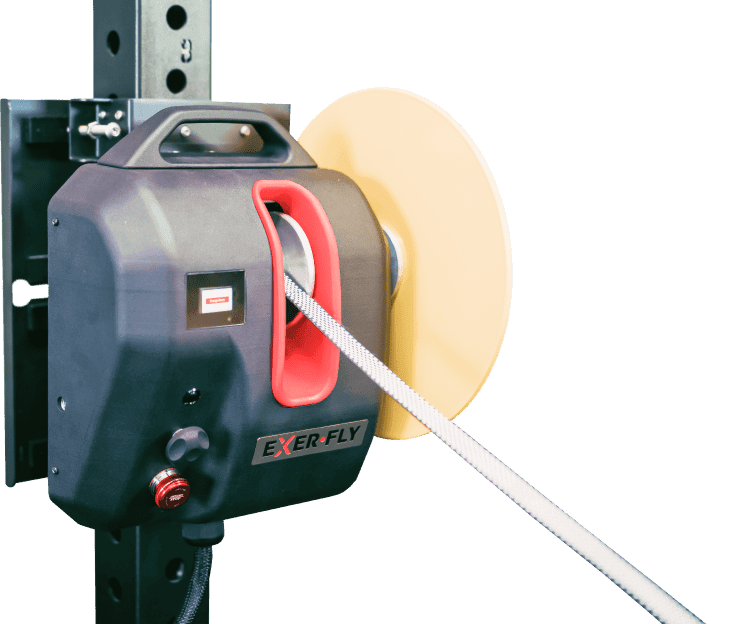
John Cronin On Flywheel Resistance Training
John Cronin is a Professor in Strength and Conditioning at AUT University and the founder of JC Online. John specializes in human movement research around strength and conditioning for strength, power, speed, and change of direction; and has published over 400 peer-reviewed papers.
John also has plenty of experience as a coach, training various athletes and teams ranging from youth developmental athletes to elite World Champion individuals. Recently, John analyzed flywheel training's role in musculoskeletal rehabilitation for Exerfly, and this is what he found.
Benefits Of Flywheel Training For Rehabilitation
- Flywheel training could be better than many forms of resistance as the overload is directly related to the force production capability of your injured/non-injured limbs. In other words, the energy stored in the flywheel and returned during the eccentric contraction is equal to that you put into it during the concentric phase.
- Flywheel training can be particularly advantageous when dealing with rotator cuff injuries, late-stage ACL rehabilitation, knee rehabilitation, fall prevention, sarcopenia prevention in the elderly, and building strength at a lower intensity. Stimulating gains in strength, hypertrophy, muscle activation, and muscle length leads to positive adaptations and muscle healing across the board.
- With Exerfly, resistance is based on the inertia of the flywheel. The input force of the athlete's concentric output, meaning the machine adapts to the needs and capabilities of the individual user, even while in recovery.
- Exerfly’s self-managed resistance feature adapts while the body fatigues, allowing the user to adapt to the exercise at their own pace, easing or challenging the resistance as needed. Different flywheels can also be used for various movements. I.e., smaller flywheels are typically used for smaller muscle groups such as shoulder rehabilitation.
Why Flywheel Training Instead Of Traditional Strength Training For Rehabilitation
- Flywheel training surpasses other forms of resistance because the overload provided by the flywheel is equal to the user’s force capabilities. Traditional strength training does not adapt to the user’s output and could result in further injuries or damage to the affected area.
- Flywheel training only requires lightweight flywheels to generate force and are safer to handle than the heavy weights used with traditional strength training
- Elite sports teams and athletes have tried and tested flywheel training for rehabilitation and recovery. Exerfly’s work with New Zealand rugby teams lead to dramatic results in a short time frame because the players can recreate movements with complete control over the speed of the flywheel.
John's Flywheel Resistance Training Online Course
It has been a few months in the making, but John Cronin has finally put the finishing touches to a flywheel resistance training course. The course has three modules:
- Masterclass where the physiology and or mechanics of FRT are discussed;
- Assessment Zone – where assessment and monitoring using FR are introduced; and
- Exercise zone – where flywheel exercise prescription and loading parameters are introduced for injury prevention, rehabilitation, and performance. It is very much a learn-by-doing course, so ensure you have access to flywheel technology. For those who would like more detail, head to the end of this post.
It is the course's first iteration, and I will update the existing modules as new research comes to press. Also, I would like to add modules advancing knowledge on assessment procedures and exercise prescription. In this regard, if you come across anything or you have found things that have worked well for you, please feel free to contact me. I will share with your permission and incorporate them into updates or new modules.
Masterclass
In this module, you will learn:
- You should be aware of how flywheel technology works and some differences in devices.
- The differences between flywheel resistance training (FRT) and free-weight constant resistance training (CRT) are detailed.
- After that, the types of adaptation observed with FRT are discussed.
- Finally, FRT's benefits, limitations, and utility are briefly mentioned.
Assessment Zone
In this module, you will learn:
- A little about the technologies used to quantify flywheel motion.
- Since flywheel motion is angular/rotary in nature, angular kinematics and kinetics will be discussed in detail.
- You will also be introduced to methods of calculation and establishing the reliability of linear and angular variables.
- Force-velocity-power profiling is introduced alongside other variables you can use for assessment and monitoring.
- Finally, some case studies reinforce your knowledge in this area.
Exercise Zone
In this module:
- Your understanding of the unique characteristics of FRT will be reinforced via a kinesthetic learn-by-doing approach.
- You will then be introduced to the basics of flywheel loading.
- After that, a lot of research has been reviewed to give you evidence-based loading parameters for the flywheel training of certain fitness qualities.
- Finally, information on injury prevention, rehabilitation, and flywheel exercise for the elderly is discussed.
The course can be purchased here






